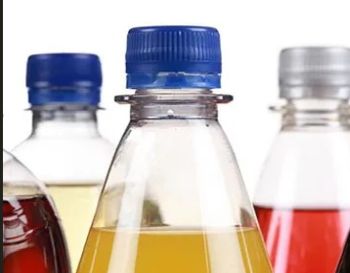Association between sugar-sweetened beverage consumption and constructs of the Health Belief Model in young adult students at the University of Chester
Abstract
Background
Young adults are reported as one of the major consumers of sugar-sweetened beverages (SSBs) globally and the consumption of SSBs is associated with long-term medical conditions. The Health Belief Model (HBM) has been applied to understand SSB consumption by children and adolescents through the use of its constructs. There is a gap in knowlege of HBM application to SSB consumption of young adults. Therefore, the present study was undertaken to fill this gap.
Objective
The primary objective of the study was to determine if an association existed between SSB consumption status and the constructs of the HBM: perceived susceptibility, perceived severity, perceived barriers, perceived benefits, self-efficacy, and cues in young adult students.
Methods
Design: Cross-sectional data were obtained using an online self-administered structured questionnaire. Descriptive statistics and Chi-squared (X2) test for association were used to analyse the data.
Setting: Participants were recruited via email and WhatsApp.
Participants: Seventy young adult students aged 18 to 30 years studying at the University of Chester, England.
Results
The mean age of the participants was 25.5 years (SD: 3.0). 53% consumed SSBs on a given day. Postgraduates (58%), Blacks (52%), and Asian students (70%) had the greater percentages of SSB consumers. There was a very strong significant association between SSB consumption status and level of perceived severity of diseases from a high intake of SSBs, X2 (1, N = 70) = 6.94, P = 0.01, Cramer’s V = 0.32. Also, a very strong association existed between SSB consumption status and self-efficacy level to control SSB intake, X2 (1, N = 70) = 8.83, P = 0.00, Cramer’s V = 0.36.
Conclusions
A high percentage of young adult students especially those from minority ethnic groups in the UK consumed SSBs which indicates that targeted initiatives at these groups are required to control their intake. Interventions to control SSB intake in young adult students should consider increasing their level of perceived severity of diseases from a high intake of SSBs and self-efficacy to control SSB intake. We recommend actions that can further increase their awareness of how serious diseases from a high intake of SSBs are. We also recommend measures intended to increase the confidence of young adultstudents in their ability to avoid SSBs when they are stressed, after writing exam, when they are eating, and when they engage in sedentary activities. In particular, modifying their environment to prevent the availability of SSBs at home and regulating the promotion and cost (via taxation) of SSBs in stores would help to increase their self- efficacy level. Further studies to determine why a greater percentage of postgraduate students are consuming SSBs despite their level of education is required. More comprehensive research on SSB consumption in young adults using the HBM is necessary.

Authors retain all copyrights. In making a submission to World Nutrition, they are certifying that all material is theirs except quotations, as indicated, and that they have obtained permission for any photos, tables, or graphics taken from other publications or websites.




